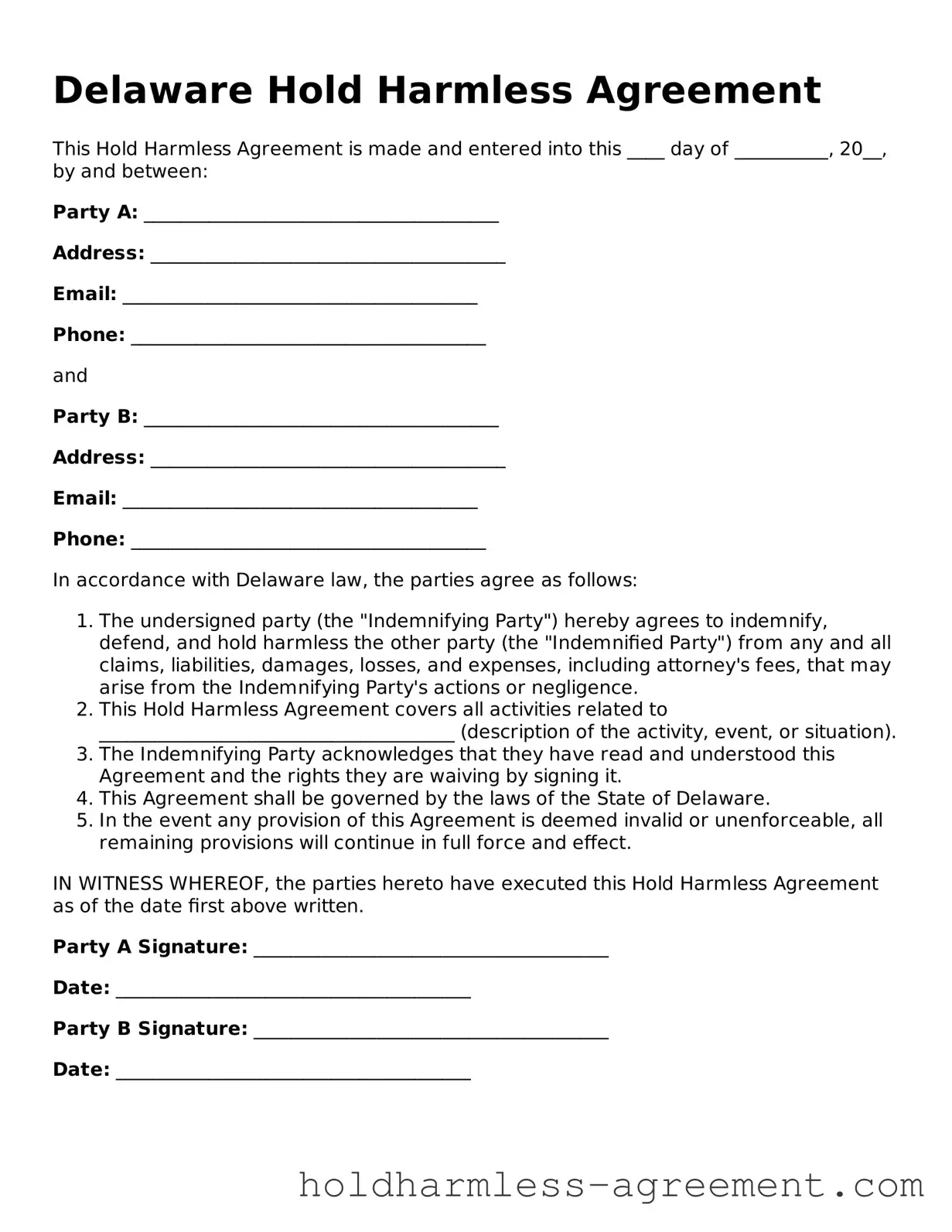Filling out a Delaware Hold Harmless Agreement can seem straightforward, but many individuals make common mistakes that can lead to complications later on. One frequent error is failing to include all necessary parties. It’s crucial to ensure that everyone involved in the agreement is clearly identified. Omitting a party could result in legal vulnerabilities, as the agreement may not fully protect all intended individuals.
Another common mistake is neglecting to specify the scope of the agreement. People often write vague terms that do not clearly outline what risks are being covered. This lack of clarity can lead to misunderstandings and disputes about what is included under the agreement. It’s essential to be specific about the types of liabilities and situations that the agreement addresses.
Many individuals also forget to date the agreement. A missing date can create confusion about when the agreement was made and can complicate matters if a dispute arises. A clear timeline is vital for both parties to understand the context and enforceability of the agreement.
Some people make the mistake of not reviewing the agreement thoroughly before signing. Rushing through the process can lead to overlooking critical details or misinterpretations of the terms. It’s advisable to read the document multiple times and, if necessary, seek clarification on any points that seem unclear.
In addition, failing to consider state-specific laws can be a significant oversight. Each state may have different requirements or enforceability standards for Hold Harmless Agreements. Not being aware of these nuances can lead to an agreement that is invalid or unenforceable in Delaware.
Another issue arises when individuals attempt to modify the agreement without proper legal guidance. Handwritten changes or informal alterations can render the document invalid. It’s always best to draft a new agreement or consult with a legal professional when changes are necessary.
People sometimes overlook the importance of signatures. An unsigned agreement, regardless of its content, holds no legal weight. Ensuring that all parties sign the document is essential for its enforceability.
Additionally, some individuals fail to keep copies of the signed agreement. Without a record, it can be challenging to reference the terms in the future. Keeping a copy ensures that all parties have access to the agreement and can revisit its terms if needed.
Finally, not understanding the implications of the Hold Harmless Agreement can lead to significant issues. Individuals may enter into agreements without fully grasping the extent of their liability or the risks they are assuming. A clear understanding is vital to making informed decisions and protecting oneself adequately.
